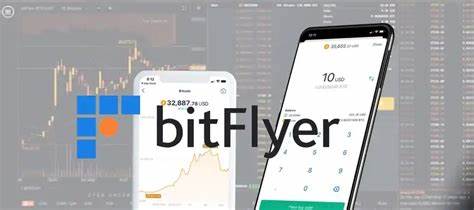Fear and Greed Index Investor Crypto
Investment and trading can be a roller coaster of emotions, with two significant factors that influence decision-making: fear and greed. A profound understanding of these psychological states can make all the difference between success and failure in the financial world.
Emotions such as anxiety and avarice play a vital role in driving market trends. However, comprehending their impact and harnessing them to one’s advantage is crucial. This comprehensive guide aims to shed light on the intricacies of the Fear and Greed Index, helping traders and investors navigate through market turbulence.
Through a combination of behavioral economics, market analysis, and psychological research, this article delves into the insights and principles that underpin the Fear and Greed Index. By examining the powerful forces of fear and greed, readers will gain a deeper understanding of market sentiment and learn how to leverage this knowledge to make informed investment decisions.
The Fear and Greed Index acts as a compass, providing a measure of the collective emotional state of market participants. Knowing when fear or greed dominates the market can help traders identify potential opportunities or potential pitfalls. This guide examines the various components that contribute to the index, including sentiment indicators, market volatility, and investor behavior, unraveling the complexities behind this essential gauge.
Understanding the Fear and Greed Index
In this section, we will explore the concept behind a popular market indicator known as the Fear and Greed Index. This tool is designed to provide insights into the prevailing sentiment of investors and traders in the financial markets.
The Psychology of Market Sentiment
Market sentiment plays a crucial role in determining the direction of financial markets. It reflects the collective emotions and attitudes of market participants, which can range from extreme optimism to extreme pessimism. Understanding and analyzing market sentiment is essential for making informed investment decisions.
Introducing the Fear and Greed Index
The Fear and Greed Index is a numerical indicator that gauges the emotional state of investors and traders, providing an understanding of how fear or greed influences market behavior. It takes into account various factors and metrics, such as market volatility, stock price momentum, and investor surveys, to generate a single value.
The index ranges from 0 to 100, with higher values indicating extreme greed and lower values indicating extreme fear. By tracking the movements of the Fear and Greed Index, analysts can identify trends and potential turning points in market sentiment.
Understanding the Fear and Greed Index can help investors assess the prevailing market sentiment and make informed decisions based on it. Whether it’s recognizing a market bubble during periods of extreme greed or identifying buying opportunities during periods of extreme fear, this index provides valuable insights into the psychology of market participants.
Factors Influencing the Fear and Greed Index
The Fear and Greed Index, a popular metric used to gauge market sentiment, is influenced by a multitude of factors that impact investors’ emotions and behaviors. Understanding these factors is crucial for interpreting the index and predicting potential market trends.
Market Volatility
One key factor affecting the Fear and Greed Index is market volatility. When markets experience high levels of volatility, characterized by significant and rapid price fluctuations, fear tends to dominate investor sentiment. Conversely, during periods of low volatility, greed tends to prevail as investors become more confident in the market’s stability.
Economic Data
Economic data, such as GDP growth, employment rates, and inflation, can greatly influence the Fear and Greed Index. Positive economic indicators often generate optimism among investors, leading to increased levels of greed. Conversely, negative economic data can evoke fear and cause investors to adopt a more cautious approach.
Geopolitical Events
Geopolitical events, such as elections, trade disputes, and geopolitical tensions, can significantly impact the Fear and Greed Index. Uncertainty surrounding these events can trigger fear and cause investors to adopt a defensive stance. Geopolitical stability and positive developments, on the other hand, can foster a sense of greed among investors.
Global Market Sentiment
The Fear and Greed Index is also influenced by global market sentiment. Trends in international markets, such as stock market performances, currency fluctuations, and economic policies, can spill over to local markets and affect investor emotions. Positive global market sentiment can fuel greed, while negative sentiment can trigger fear.
Psychological Factors
Lastly, various psychological factors play a role in shaping the Fear and Greed Index. Investor sentiment, herd mentality, and fear of missing out (FOMO) can all impact market behavior. The index often reflects the collective emotions and actions of investors, highlighting the influence of psychological factors on market sentiment.
By considering these factors and their impact on the Fear and Greed Index, investors can gain insights into market sentiment and potentially make more informed investment decisions.
The Importance of Measuring Market Sentiment
Understanding the prevailing sentiment in financial markets is essential for successful investing and trading. Market sentiment, driven by human emotions, can greatly influence the direction and volatility of asset prices. To accurately gauge market sentiment, financial analysts rely on various indicators, one of which is the Fear and Greed Index.
Why does market sentiment matter?
Market sentiment reflects the overall attitude and emotional state of participants in the financial markets. It helps investors and traders gain insights into the prevailing investor psychology, which can guide their decision-making process. By understanding whether the market is driven by fear or greed, individuals can better anticipate and respond to potential market movements.
What is the Fear and Greed Index?
The Fear and Greed Index is a popular sentiment indicator used by financial professionals to assess the current sentiment in the market. It takes into account various factors, including market volatility, volume, and investor behavior, to generate a single numerical value that represents the overall sentiment.
How does the Fear and Greed Index work?
The Fear and Greed Index operates on a scale ranging from 0 to 100, with extreme fear typically represented by lower values and extreme greed represented by higher values. The index analyzes key market indicators and combines them to provide a holistic view of the market sentiment. Higher values indicate a higher level of greed, indicating that investors are more optimistic and willing to take risks. Conversely, lower values suggest a higher level of fear, indicating that investors are more cautious and hesitant to make investment decisions.
Why is the Fear and Greed Index important?
The Fear and Greed Index plays a crucial role in helping investors and traders make informed decisions. By monitoring and analyzing market sentiment, individuals can identify potential market turning points and take advantage of trading opportunities. When the Fear and Greed Index reaches extreme levels, it can serve as a contrarian indicator, suggesting that the prevailing sentiment may be due for a reversal. Additionally, the Fear and Greed Index can help investors manage their emotions and avoid making impulsive investment decisions based on short-term market fluctuations.
In conclusion, the Fear and Greed Index is a valuable tool for understanding market sentiment and guiding investment strategies. By regularly monitoring this index, investors and traders can gain insights into prevailing emotions and market behavior, enabling them to make well-informed decisions and potentially enhance their investment returns.
Using the Fear and Greed Index for Investment Decisions
Exploring the Potential of the Fear and Greed Index for More Informed Investment Choices
When it comes to making investment decisions, it is crucial to have access to reliable data and insights that can guide you towards profitable outcomes. One such tool that investors can utilize is the Fear and Greed Index. This index, which gauges the sentiment and emotions of the market, can provide valuable information about the current state of the market and help investors make more informed choices.
- Identifying Market Sentiment Trends: By analyzing the Fear and Greed Index, investors can gain insights into the prevailing sentiment among market participants. Understanding whether the market is gripped by fear or driven by greed can influence investment decisions.
- Determining Market Volatility: The Fear and Greed Index can be a useful tool in assessing market volatility. Extreme fear or greed levels can indicate potential overbought or oversold conditions, thereby highlighting opportunities for investors to enter or exit the market.
- Timing Entry and Exit Points: By tracking the Fear and Greed Index, investors can identify optimal entry and exit points. For instance, during periods of extreme fear, when the index is low, it may present buying opportunities as market sentiments tend to overreact. Conversely, during periods of greed, when the index is high, it may indicate a potential market top, signaling the need to sell or take profits.
- Monitoring Investor Psychology: The Fear and Greed Index provides valuable insights into investor psychology, as it reflects the emotions and sentiment of market participants. By understanding the prevailing emotions driving the market, investors can better anticipate market movements and adjust their strategies accordingly.
- Using the Fear and Greed Index in Combination with Other Indicators: While the Fear and Greed Index is a powerful tool, it is important to note that it should not be the sole basis for investment decisions. Investors should consider utilizing the index in conjunction with other indicators, such as fundamental analysis and technical analysis, to make more comprehensive and well-informed investment choices.
Overall, the Fear and Greed Index can be a valuable resource for investors in understanding market sentiment, identifying potential opportunities, and managing risk. By incorporating this index into their investment decision-making process, investors can enhance their chances of achieving success in the dynamic world of finance.
Limitations and Criticisms of the Fear and Greed Index
While the Fear and Greed Index provides valuable insights into market sentiment, it is important to consider its limitations and criticisms in order to fully understand its implications.
One limitation of the Fear and Greed Index is its reliance on aggregated data and indicators, which may not always accurately reflect individual investor behavior. Market sentiment can be highly subjective and influenced by a range of factors, making it challenging to capture in a single index.
Furthermore, the Fear and Greed Index does not differentiate between different types of fear and greed, treating them as binary states. This oversimplification fails to capture the complexity of investor psychology and may overlook important nuances in sentiment analysis.
Critics of the Fear and Greed Index argue that it relies heavily on short-term indicators, making it less reliable for long-term trend analysis. Market sentiment can vary widely over different timeframes, and a singular index may not account for these variations adequately.
Another criticism is that the Fear and Greed Index may be influenced by market manipulation or noise trading, which can distort the true sentiment of the market. External factors, such as media coverage or social media buzz, can also impact the index readings, leading to inaccurate interpretations of market sentiment.
Finally, the Fear and Greed Index is just one of many tools available for understanding market sentiment. It should be used in conjunction with other indicators and analysis to form a comprehensive understanding of investor behavior and market trends.
Q&A: Fear and greed index
What is the significance of the CBOE Volatility Index (VIX) in determining market momentum?
The CBOE Volatility Index, or VIX, is often referred to as the “fear gauge” because it measures market expectations for near-term volatility. A rising VIX is typically associated with increased volatility and can indicate a potential shift in market momentum.
How do traders interpret a bullish market sentiment, and what factors contribute to a bullish market?
A bullish market sentiment is characterized by optimism and expectations of rising prices. Factors contributing to a bullish market include strong economic indicators, positive corporate earnings reports, and favorable market conditions.
What are 52-week highs, and how do they reflect stock price strength?
52-week highs refer to the highest trading price of a stock over the past year. Stocks hitting 52-week highs are often seen as exhibiting price strength, as they have outperformed their previous price levels.
What role does stock price breadth play in assessing market health?
Stock price breadth measures the number of stocks participating in a market advance or decline. Strong breadth, where a large number of stocks are advancing, is considered a positive sign for the market, indicating broad-based strength.
How do call options work, and why are they often associated with bullish market sentiment?
Call options give the holder the right, but not the obligation, to buy a stock at a specified price within a specified period. They are associated with bullish sentiment because buyers of call options profit from rising stock prices.
What are junk bonds, and how are they typically affected during bear markets?
Junk bonds are high-yield, high-risk bonds issued by companies with lower credit ratings. During bear markets, junk bonds are often more vulnerable to default risk, leading to potential price declines.
How do moving averages help traders assess price strength and market momentum?
Moving averages are used to smooth out price data and identify trends over time. Traders often use moving averages to gauge price strength, with prices above the moving average indicating bullish momentum and prices below indicating bearish momentum.
What is the significance of trading volume in analyzing market trends?
Trading volume refers to the number of shares or contracts traded in a security or market during a given period. High trading volume often accompanies strong price moves, indicating increased investor interest and potentially confirming market trends.
How do traders interpret a bearish market sentiment, and what factors contribute to a bearish market?
A bearish market sentiment is characterized by pessimism and expectations of falling prices. Factors contributing to a bearish market include weak economic indicators, negative corporate earnings reports, and unfavorable market conditions.
How do traders use the concepts of greed and fear to assess market sentiment and potential market reversals?
Traders often use the concepts of greed and fear as contrarian indicators. Extreme greed can signal overbought conditions and a potential market reversal, while extreme fear can signal oversold conditions and a potential buying opportunity.
What is the Crypto Fear and Greed Index, and how is it calculated?
The Crypto Fear and Greed Index is a tool used to gauge the sentiment of cryptocurrency investors. It is calculated using various data points, including market volatility, trading volume, social media activity, and surveys.
How does the Crypto Fear and Greed Index differ from traditional market indicators like the S&P 500?
The Crypto Fear and Greed Index focuses specifically on the cryptocurrency market, while the S&P 500 is an index of 500 large companies listed on the New York Stock Exchange and Nasdaq. The S&P 500 is based on the market capitalization of its constituents, while the Crypto Fear and Greed Index uses different metrics to assess sentiment.
Can the Crypto Fear and Greed Index be used to gauge stock market movements and whether stocks are undervalued or overvalued?
While the Crypto Fear and Greed Index is specific to the cryptocurrency market, its methodology could potentially be applied to the stock market. However, the index is not designed to directly gauge stock market movements or assess stock valuations.
How is the Crypto Fear and Greed Index calculated, and what data sources are used?
The Crypto Fear and Greed Index is calculated using various data sources, including market data, social media sentiment analysis, and surveys. The index uses these data points to assess the level of fear or greed in the cryptocurrency market.
What does a high Crypto Fear and Greed Index value indicate, and how does it differ from a low value?
A high Crypto Fear and Greed Index value indicates that many investors are greedy, which could signal an overbought market. A low value indicates that many investors are fearful, which could signal an oversold market.
How can traders use the Crypto Fear and Greed Index to inform their trading decisions?
Traders can use the Crypto Fear and Greed Index as a contrarian indicator. For example, when the index shows extreme greed, it could be a signal that the market is overbought and due for a correction. Conversely, when the index shows extreme fear, it could be a signal that the market is oversold and potentially a buying opportunity.
What are some of the data points used to calculate the Crypto Fear and Greed Index?
Some of the data points used to calculate the Crypto Fear and Greed Index include market volatility, trading volume, social media sentiment, surveys of investor sentiment, and the number of cryptocurrencies hitting 52-week highs or lows.
How does the Crypto Fear and Greed Index use the number of cryptocurrencies hitting 52-week highs or lows to assess market sentiment?
The number of cryptocurrencies hitting 52-week highs or lows is used as an indicator of market sentiment. A high number of cryptocurrencies hitting 52-week highs could indicate greed, while a high number hitting 52-week lows could indicate fear.
What role does the Crypto Fear and Greed Index play in understanding market dynamics and the mood of investors?
The Crypto Fear and Greed Index is a market sentiment indicator that helps investors understand the mood of cryptocurrency investors. It can provide insights into market dynamics and help investors make informed decisions.
How often is the Crypto Fear and Greed Index updated, and where can investors find the latest index value?
The Crypto Fear and Greed Index is typically updated daily and can be found on various financial news websites, including CNN Business. Investors can use the index value to assess market sentiment and make informed decisions about their investments.







